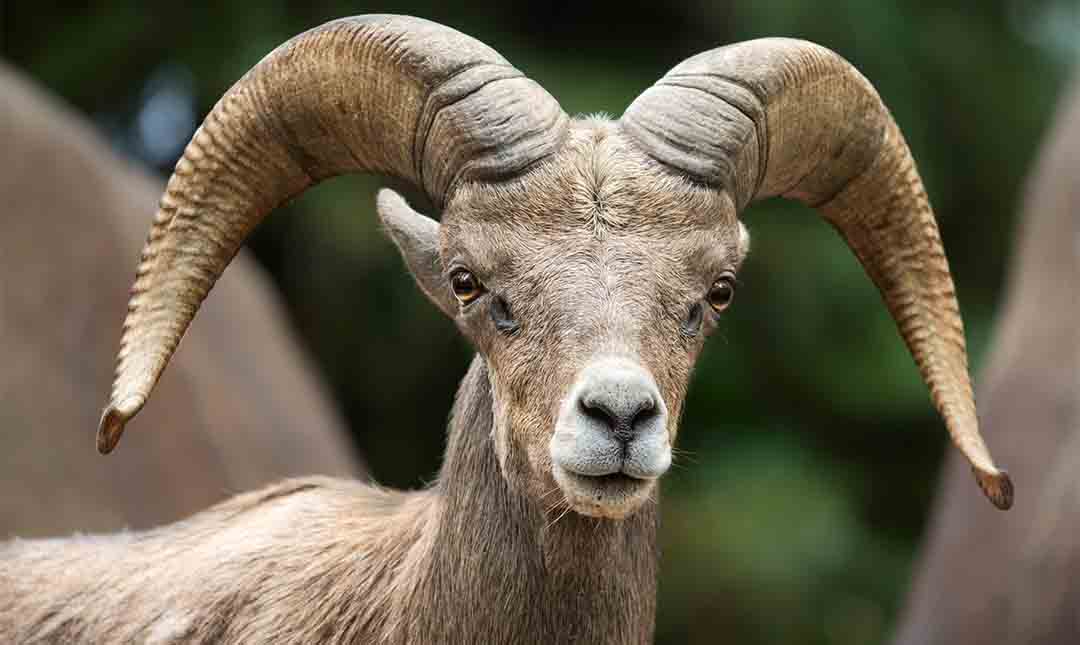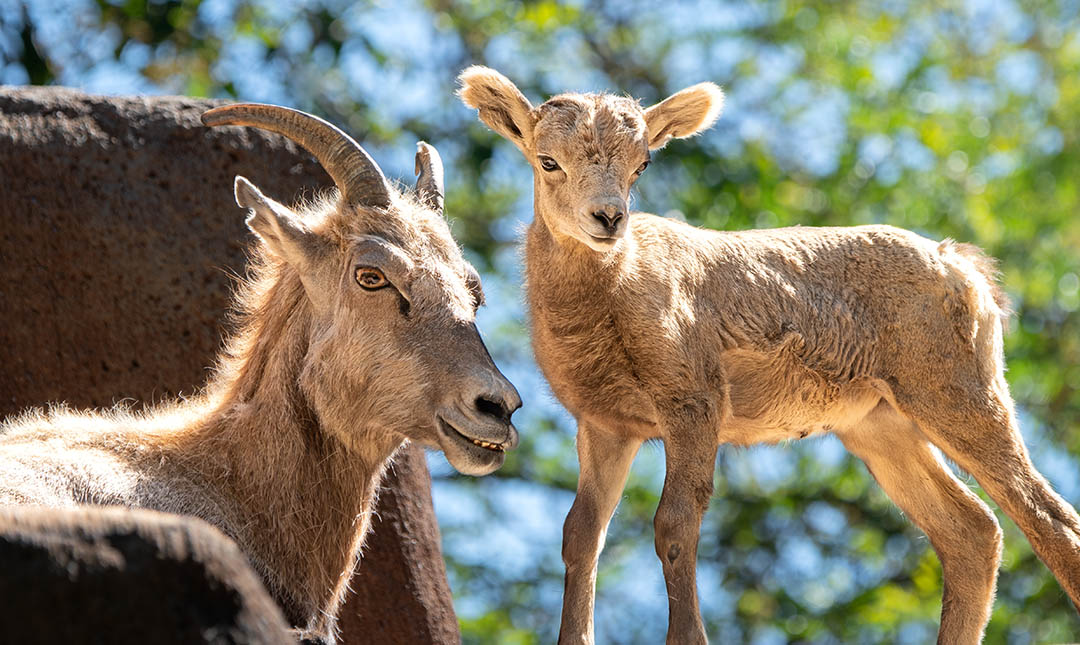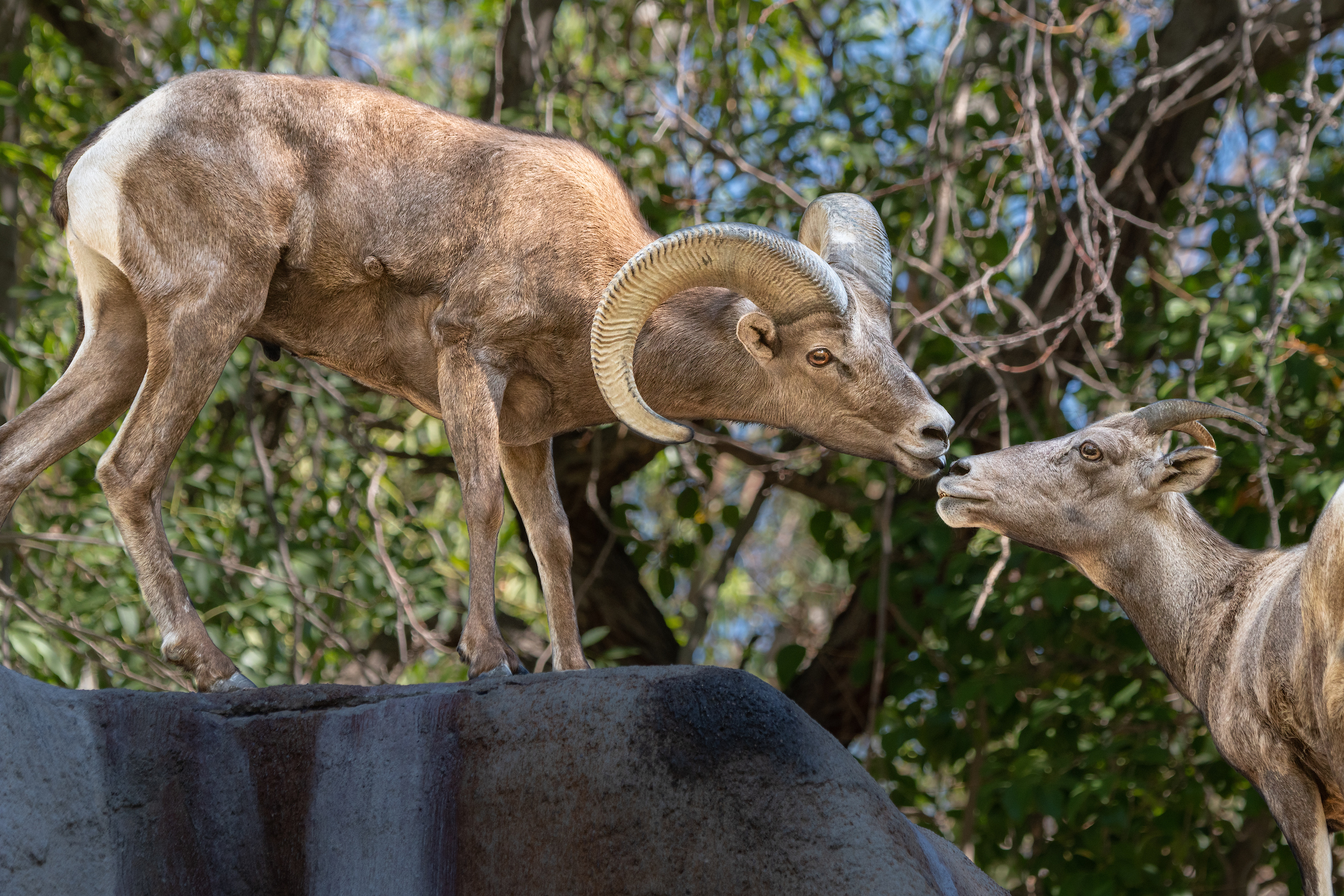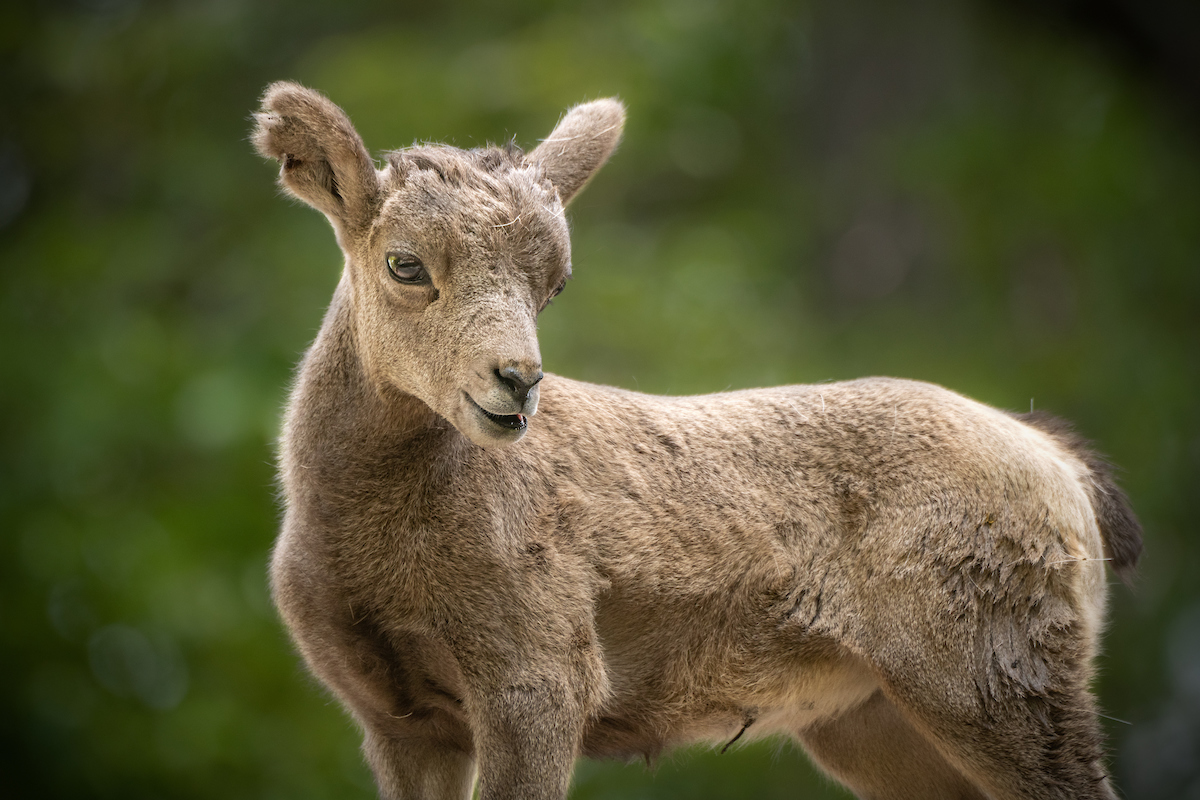About
The largest wild sheep in North America, bighorn sheep are named for their majestic horns, which can arc in a spiral over three feet long and weigh up to 30 pounds. Unlike antlers, horns are not shed; they are made of keratin (the same substance as fingernails and hair) and grow like sheaths from bony structures on the skull. Both males (rams) and females (ewes) have horns, but the male’s horns grow much larger.
Age and horn size determine male dominance, and head-butting clashes between rams are used to settle disputes. During the fall mating season, or “rut,” younger males engage in these fights more frequently than older males, who are better at assessing the competition and know when to back down. Rams charge each other at speeds of more than 20 miles per hour, crashing horns with a cracking sound that can be heard up to a mile away. Head-butting contests have been known to last for hours, even days. Special skull adaptations protect the animals’ brains. As with many competitions in nature, the victor wins mating rights.
After a gestation of about six months, a single lamb is born. Desert bighorn sheep are expert climbers and effortlessly maneuver steep terrain and ridges as narrow as two inches. Their hooves grow in two sections with sharp outer edges and soft, elastic centers to provide traction. Their acute eyesight allows them to accurately gauge distances, and they can jump 20 feet from ledge to ledge. On flat terrain they can run 30 miles per hour, and they can climb steep slopes as fast as 15 miles per hour. Eyes positioned on the sides of their heads and rectangular pupils give them peripheral vision of up to 320 degrees, which helps them spot predators such as mountain lions, wolves, coyotes, and bobcats, from as much as a mile away.
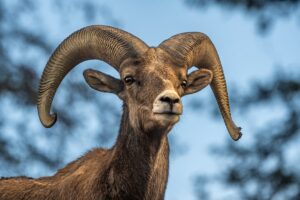
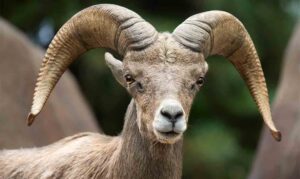
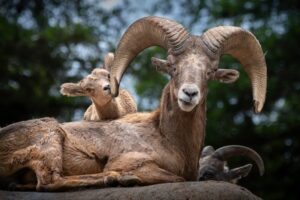
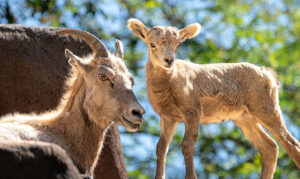
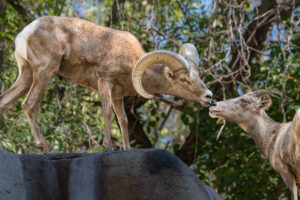
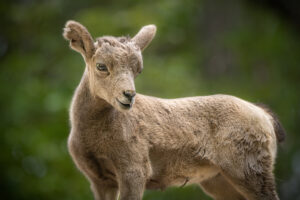
Status
Although IUCN lists the bighorn sheep as a species of least concern, populations of desert bighorn sheep are less stable.
Habitat
Desert bighorns are found in the southwestern U.S. and portions of northern Mexico. Their range includes Utah, Nevada, New Mexico, Arizona, and Southern California, including Anza-Borrego Desert State Park, Joshua Tree National Park, and Death Valley National Park.
Diet
Bighorn sheep are grazers. They eat a variety of grasses and brush and will use their horns to split open cactuses to access the succulent flesh inside. They derive most of the moisture in their diet from desert plants, but still need to visit water holes every few days during the summer months.
Physical Characteristics
Desert bighorn sheep are smaller than their cousins, the Rocky Mountain bighorn sheep. Length is about 5 feet, height at the shoulder up to 3.5 feet. They weigh 100 to 220 pounds with males larger than females. Lifespan is estimated to be between 6 and 15 years.
LOCATION WITHIN THE ZOO
You’ll find this animal in the Animals of the Drylands section. See Zoo Map.



